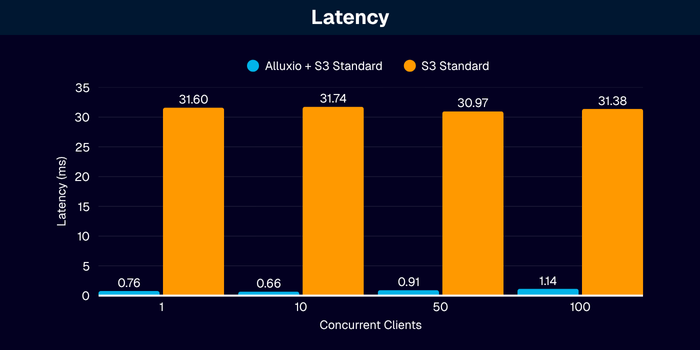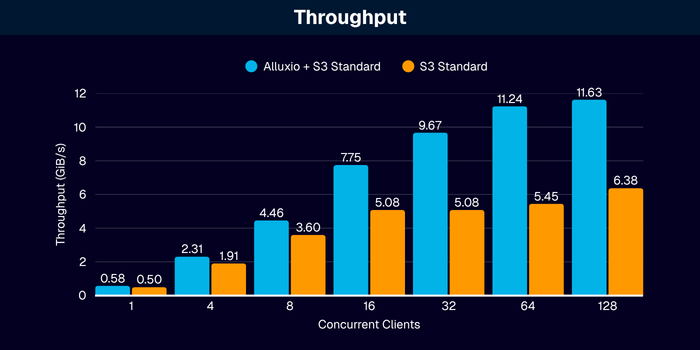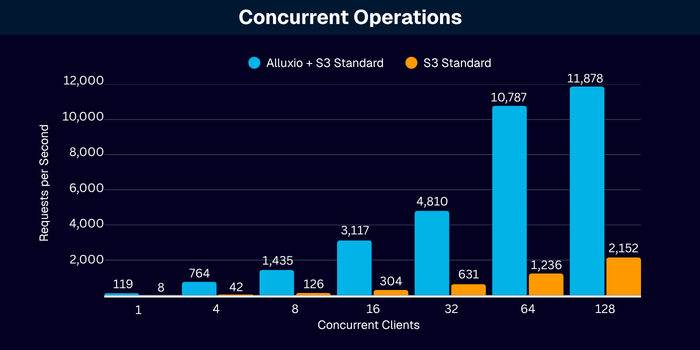Products
Accelerate your Cloud Object Storage for AI Workloads
October 14, 2025
Cloud object storage like S3 is the backbone of modern data platforms — cost-efficient, durable, and massively scalable. But many AI workloads demand more: sub-millisecond response times, append and update support, and the ability to seamlessly support AI workloads as they scale across clouds and on-premises datacenters.
Alluxio turbo-charges your existing object storage, giving you the speed and efficiency required for next-generation AI workloads — without giving up the scale, durability, and economics of S3.

Why S3 Alone Isn’t Enough for AI
Amazon S3 is unbeatable for scale, durability, and cost. But when workloads shift from batch analytics to AI training, inference, feature stores, and agentic memory, cracks appear:
- Latency: Standard S3 read latency is often 30–200 ms — acceptable for ETL, but crippling for model training, inference, and agentic memory, retrieval-augmented generation (RAG), and feature store lookups.
- Limited semantics: Appends and renames aren’t natively supported by standard S3 buckets, preventing workflows that depend on write-ahead logs or iterative updates.
- Metadata bottlenecks: Listing millions of objects can be slow and expensive, dragging down iterative ML pipelines.
S3 is brilliant as a capacity store. But for AI workloads that need real-time performance, it falls short. The question most architects ask:
“Can I meet AI latency and semantics requirements without replacing S3 and without introducing complex data migration or cloning workflows?”
Make S3 Ready for AI with Alluxio
Alluxio sits transparently between your AI applications and S3 (or any object store), transforming S3 into a low-latency and high-throughput data store with enhanced semantics that’s ready for AI:
- Sub-ms Latency: Cache frequently accessed training data, model files, embeddings, or Parquet files on NVMe for sub-millisecond time-to-first-byte (TTFB).
- TiB/s throughput: Push terabytes per second of throughput with a single Alluxio cluster that scales horizontally with additional Alluxio Worker nodes.
- Semantic Enhancement: Enable append, write backs, and cache-only updates — features that object stores lack natively.
- Kubernetes Native: Run side-by-side with your GPU clusters, scale linearly with your workloads, and monitor with built-in observability.
- Zero Migration: Mount existing S3 buckets as-is; no rewrites, no data moves. Unlike single-node API-translation tools such as s3fs, Alluxio is fully distributed and cloud-native, implementing decentralized metadata and data management.
What about Amazon FSx for Lustre and S3 Express One Zone? Both deliver improved latency compared to S3 Standard but can be cost prohibitive and have other drawbacks. Think of it this way:
- FSx for Lustre is a high-speed POSIX filesystem but requires provisioning and has no S3 API interface.
- S3 Express One Zone offers low-latency object access — but only within a single AZ and requires manual data migration from S3 Standard — plus, it costs roughly 5X more than S3 Standard.
Alluxio is the best of all worlds, delivering low-latency performance with the flexibility to access data via POSIX or S3 APIs – all without changing your storage backend or migrating data and at a fraction of the cost of FSx and S3 Express.
.png)
Blog
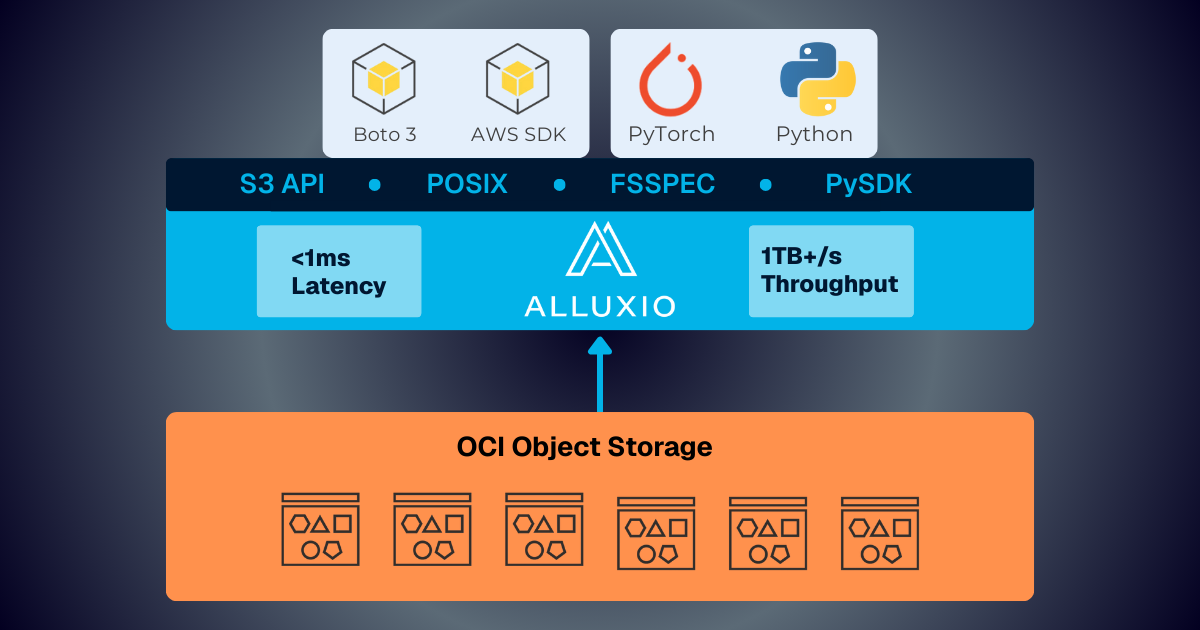
Alluxio and Oracle Cloud Infrastructure: Delivering Sub-Millisecond Latency for AI Workloads
Oracle Cloud Infrastructure has published a technical solution blog demonstrating how Alluxio on Oracle Cloud Infrastructure (OCI) delivers exceptional performance for AI and machine learning workloads, achieving sub-millisecond average latency, near-linear scalability, and over 90% GPU utilization across 350 accelerators.
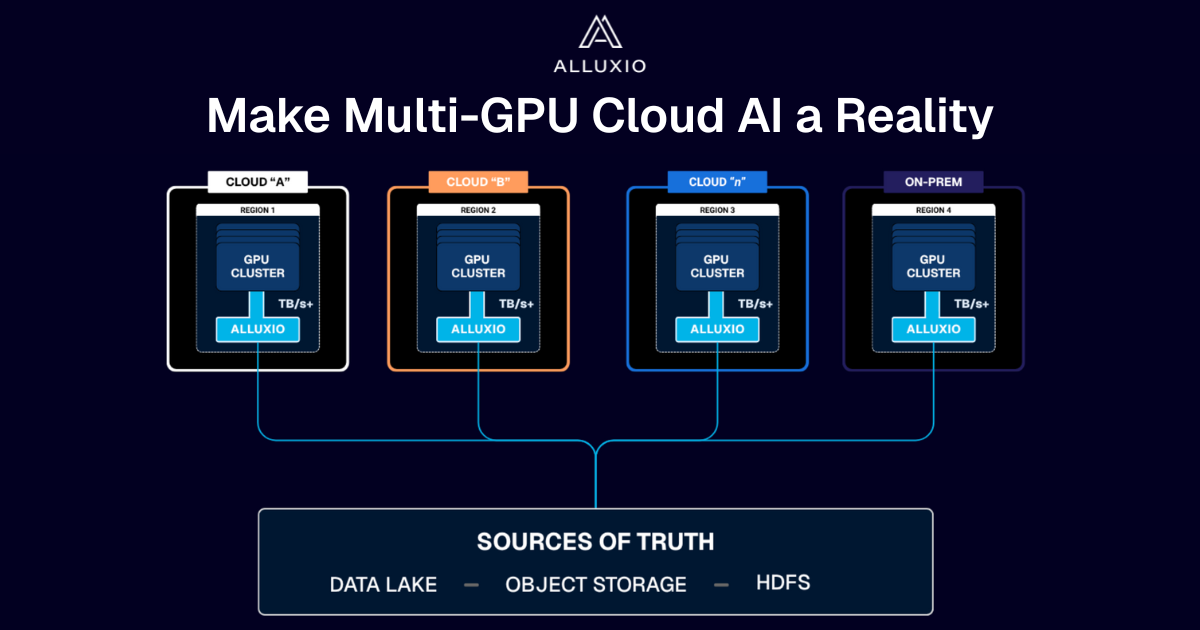
Make Multi-GPU Cloud AI a Reality
If you’re building large-scale AI, you’re already multi-cloud by choice (to avoid lock-in) or by necessity (to access scarce GPU capacity). Teams frequently chase capacity bursts, “we need 1,000 GPUs for eight weeks,” across whichever regions or providers can deliver. What slows you down isn’t GPUs, it’s data. Simply accessing the data needed to train, deploy, and serve AI models at the speed and scale required – wherever AI workloads and GPUs are deployed – is in fact not simple at all. In this article, learn how Alluxio brings Simplicity, Speed, and Scale to Multi-GPU Cloud deployments.

Alluxio's Strong Q2: Sub-Millisecond AI Latency, 50%+ Customer Growth, and Industry-Leading MLPerf Results
Alluxio's strong Q2 featured Enterprise AI 3.7 launch with sub-millisecond latency (45× faster than S3 Standard), 50%+ customer growth including Salesforce and Geely, and MLPerf Storage v2.0 results showing 99%+ GPU utilization, positioning the company as a leader in maximizing AI infrastructure ROI.

